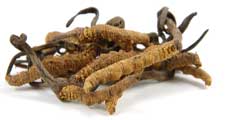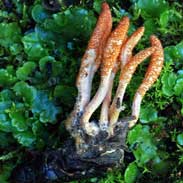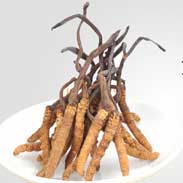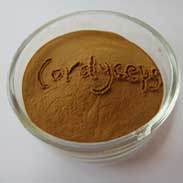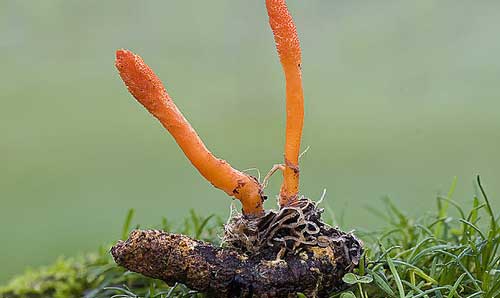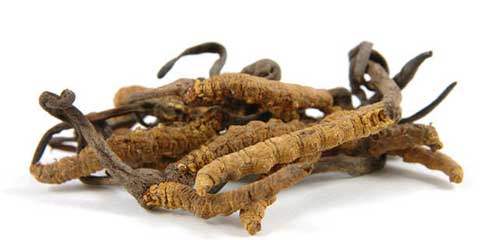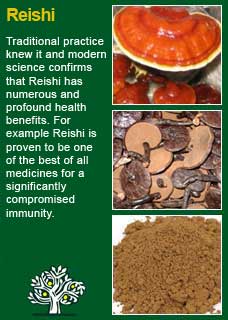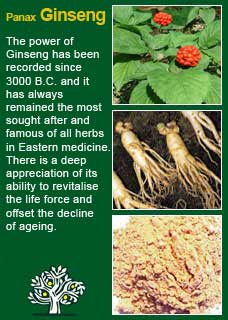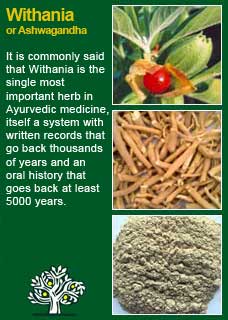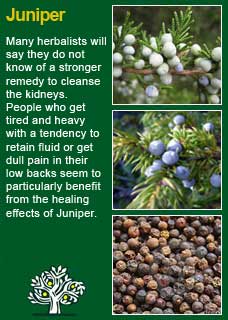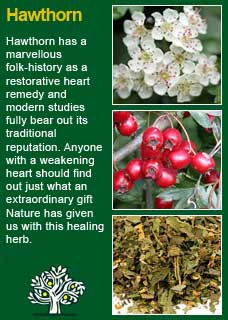
|
|
||||
| Our Pages ABOUT CONSTITUTIONAL MEDICINE
|
Cordyceps is naturally found at high altitude in the mountains of China, Nepal and Tibet. It is also known as the Caterpillar fungus as it grows on and obtains nutrients from several different kinds of caterpillars.
Cordyceps sinensis has been described as a medicine in Chinese medical books and Tibetan medicine since ancient times. It is a rare combination of a caterpillar and a fungus found at altitudes above 4500m. The normal harvesting period stretches from April to August. It naturally grows only in high-altitude regions in cold, grassy, alpine meadows of the Himalayan mountains. C. Sinensis is an annual Ascomycetes fungus closely related to the mushroom. Although not actually a mushroom taxonomically, it has been described as an exotic medicinal mushroom in traditional Chinese and Tibetan medicine. The name Cordyceps comes from Latin words meaning club and head. Traditional healers recommend Cordyceps sinensis as a tonic, believing it to improve energy, appetite, stamina, libido, endurance and it has the reputation of being a precious longevity-promoting herb. Folk healers used Coryceps to treat ailments including cancer, asthma, tuberculosis, diabetes, erectile dysfunction, hepatitis, etc. Initially local herders observed that yak, goat, sheep, etc. consuming Cordyceps during their grazing in the forest became strong and stout. This observation paved the way for the discovery of its medicinal value. Thereafter, local people and herders used the fungus powder with jaggery to increase milk production, and improve reproductive capacity and vitality of their cattle. Then its relevant medicinal properties were explored, collecting only the aerial part (fruiting body/stroma), which they dried in sunlight as primary processing. Then they themselves consumed it and became convinced of its medicinal effects in enhancing vigor and vitality. Cordyceps came to global attention in 1993 when a group of Chinese runners broke nine world records in the World Outdoor Track and Field Championships in Germany that year. The coach of the athletes attributed the remarkable improvement in his teams results to the use of a medicine that was based on Cordyceps sinensis, long held in high regard in Traditional Chinese Medicine (TCM) as a tonic for energy, stamina and endurance. Cordyceps has only been able to be produced on a commercial scale in recent years so it has now become much more available but for many centuries it could only be obtained through a great deal of pain-staking searching in very specific areas, especially the high mountain plains of Tibet. In the past Cordyceps was such an extremely rare medicine that it was by far the most expensive product in Oriental medicine i.e. 75 thousand dollars a kilo in San Francisco in the late 20th century! Historically it was mostly used by the Emperor and members of the nobility as a kind of super-Ginseng, to help them with rejuvenation and to regain some stamina, especially in the bedroom!
Many studies in vitro and in vivo support C. Sinensis having diverse biological activities and pharmacological potential Its effects on renal and hepatic function and immunomodulatory-related antitumor activities are most promising and deserve further attention. There has now been much modern scientific research into Cordyceps, especially through the state sponsored Chinese medical system which uses herbs as its mainstream medicine. ~ More than 2000 patients have been involved in clinical trials using Cordyceps. Placebo-controlled studies have shown it to particularly benefit elderly patients with fatigue and to improve libido in those who have reported a low sex-drive (Yang, W., et al. Clinical study of Cordyceps Sinensis on treatment of hyposexuality. J. Admin Traditional Chinese med 5, 1995: 23-24). ~ Cordyceps has a strong traditional use for treating chronic respiratory disorders such as asthma and bronchitis. Studies have shown that it does improve respiratory function but noted that the effects are accumulative and took 5-6 weeks to achieve a maximum benefit. Hans, SR. Experiences in treating patients of chronic bronchitis and pulmonary diseases with Cordyceps capsules. J. Administration Traditional Chinese Med 5(suppl) 1995: 33-34). ~ Chinese physicians have long regarded Cordyceps as one of the best medicines to aid sick kidneys and a modern study with 30 patients with renal failure have shown that it does indeed protect against toxic chemical damage to the kidneys as well as significantly improve overall kidney function (Chen =, Y. P., et al. Chinese Traditional Herbal Drugs 17(6), 1986: 256-258) ~ Both human and animal studies have shown that Cordcyeps gives multiple benefits to the cardiovascular system, even with such severe issues as ischemic heart disease, arrhythmias and chronic heart failure. (Lou, Y., et al. Cardiovascular pharmacological studies of Cordyceps. Chinese Traditional and Herbal Drugs 17(5), 1986:17-21; 209-213) (Feng, M.G., et al J Chinese Materia Medica 12(12), 1987:745-749) ~ Although no single drug or herb is equally effective in all patients, it appears rare for a patient’s arrhythmia to remain unaffected by the addition of Cordyceps to the treatment regimen. Cordyceps has been used traditionally to treat patients with heart disease and those recovering from stroke. In studies of patients suffering from chronic heart failure, the long-term administration of Cordyceps, in conjunction with conventional treatments—that is, digoxin, hydrochlorothiaside, dopamine, and dobutamine, promoted an increase in the overall quality of life. This included general physical condition, mental health, sexual drive, and cardiac function, compared to the control group. (Chen DG. Effects of JinShuiBao capsule on the quality of life of patients with heart failure. J Admin Trad Chin Med. 1995;5:40–3) ~ A double blind, randomised, placebo-controlled study which lasted 2 months showed 76% of patients having more than a 10% increase in HDL (good) cholesterol with over half having more than a 20% decrease in harmful triglycerides and a more than 10% decrease in LDL (bad) cholesterol. Shao, G., et al. Treatment of hyperlipidaemia with Cordyceps sinensis Intl J Orient Med 15(2), 1990: 77-80.
Numerous clinical studies have been conducted in China and Japan involving cancer patients; 37 of them yielding clearly positive results. In one study of 50 patients with lung cancer who were administered C. sinensis at 6 grams per day, in conjunction with chemotherapy, tumors were reduced in size in 46% of the patients studied. Another trial involving cancer patients with several different types of tumors found that C. sinensis, taken over a 2-month period at 6 g per day, improved subjective symptoms in the majority of patients, white blood cell counts were kept at 3000 per cubic millimeter or higher and, even with radiation or chemotherapy, other immunological parameters showed no significant change, whereas tumor size was significantly reduced in approximately half of the patients observed, indicating an improved tolerance for radiation and/ or chemotherapy A serious side effect to the use of conventional cancer chemotherapy and radiation therapy is the suppression of the patient’s immune system. The use of C. sinensis in combination with conventional chemotherapy appears to have an immunostimulatory effect, which enhances the effectiveness of conventional chemotherapy by balancing its side effects. (Zhou J-S, Halpern G, Jones K. The scientifi c rediscovery of an ancient Chinese herbal medicine: Cordyceps sinensis. J Altern Complement Med. 1998;4:429–57) ~ There are nearly 150 published studies and articles on Cordyceps, a PDF showing their titles, authors and when and where they were published can be found here
There have been reported very occasional allergic reactions to Cordyceps, but this type of reaction is not common. There is little published data on the use of Cordyceps in pregnant or lactating women, or in very young children, so normal appropriate precautions should be taken with these types of patients Note that if a person is using blood sugar lowering medications then they may find their levels dropping after using Cordyceps for a while but of course this would only be a reason to use less of the drugs, not the herb!
For some years now, against this proven and safe way of herbalism, there has been a rising tide of excessive caution and scare-mongering in many parts of the world. The same authorities that, not so long ago, decried herbal medicines as ineffectual, have now taken up a different adversarial position; that they are dangerous substances that should only be prescribed by Doctors, who of course have zero training in them. Unfortunately, the same unnecessary fear and worry has crept into many natural health websites and popular publications on herbs. Herbs that we have safely used for thousands of years, that have no reports of adverse reactions in the medical literature despite widespread use by millions of people, are suddenly described as contraindicated because of something that should have been seen as completely unimportant, or at the utmost a merely theoretical concern, such as a laboratory study on one of the herb's constituents to use an all too common example. I wonder sometimes if the writers of such articles feel that the herb will be more deserving of respect if it is thought to be a little bit dangerous, in other words more like a drug than something that has simply come out of the earth and been used by ordinary people for generations beyond count. There is just so much misinformation about herbal medicine on the internet now. Ludicrous claims and cautions abound in equal measure; it seems like one group are trying to make money out of the public whilst the other are busily trying to scare them off. I have to believe that the kind of reader who takes the time to read pages on herbs that are as extensive as this one is much less likely to be swayed by marketers or misinformers. I hope that you will keep your wits about you if you get conflicting opinions from people who have never really got to know these herbs, who have never worked with them, or learned how to use them safely and effectively. I want to remind you that the reason that herbs can never be patented and owned by any individual or corporation is because they are, and always will be, the People's medicine. They belong to all of us and it is my great hope in sharing this work that you will learn how to use them wisely for yourself, and the people you care for. Be safe, but do not be afraid.
I have now used Cordyceps for many patients and have developed a strong trust in its ability to deliver a potent tonic action when needed. The people I most often use it for have a pronounced weakening in their immune system, but I have also given it to people who have a worrying level of weakness in their hearts, their lungs or their kidneys. If I give a sturdy dose of Cordyceps over a reasonable time frame, I can be confident that it will help. In practice this means I am typically giving a product that gives a daily dose of over 500mg of a concentrated Cordyceps extract that has been standardised to 1% Cordycepin. In an acute or serious illness I may use as much as double this amount. There are many Cordyceps products on the market. Like every other herb it is truly a case of caveat emptor (buyer beware) and you should know that historically there has been a great deal of adulteration in the supply of Cordyceps. We now import Cordyceps directly from a reputable source so that we can supply it more inexpensively to the patients of our clinic but for someone who wants to get it directly I believe that the best place to get Cordyceps is from JHS (also called Mushroom Science) in the USA. This is a company that only does mushrooms and it does them really well (disclaimer: I have zero financial interest in this company) Mushroom science ship all over the world so if you do not have a herbalist or herbal supplier that already have them or can get them for you then you will still be able to do it yourself. Cordyceps combines perfectly with Reishi mushroom, Chaga and Coriolus. It can also be used for some people along with Panax Ginseng and Withania as general health and energy tonics and I think it works perfectly with Juniper for the kidneys and with Hawthorn for the heart.
Much of the information here about the traditional uses of Cordyceps is consistent with the model of thinking whereby one may treat problem A with plant B. There is value in this approach, especially in how it helps us pass on useful knowledge to one another, but it falls short in one vital area; and that is that people are not all cut from the same cloth! Something that works brilliantly for one person may do less for another- why is this? Part of the reason is that people vary in their constitutions as to whether they are either hotter or cooler and, at the same time, either dryer or damper. This useful and rather fascinating subject is introduced further here Another big part of using the right herb when it is most needed comes from understanding the need to treat what is going wrong for the person that had led up to their getting a health condition. In this light, Cordyceps can particularly offer its benefits when a nourishing action is needed in the 'cycle of healing', more about this here
Please understand that I cannot advise you, including on products or dosage, without seeing you in person in my clinic but for ideas
on how you might find a good herbalist in your area read here |
|
|
© 2011 R.J.Whelan Ltd
